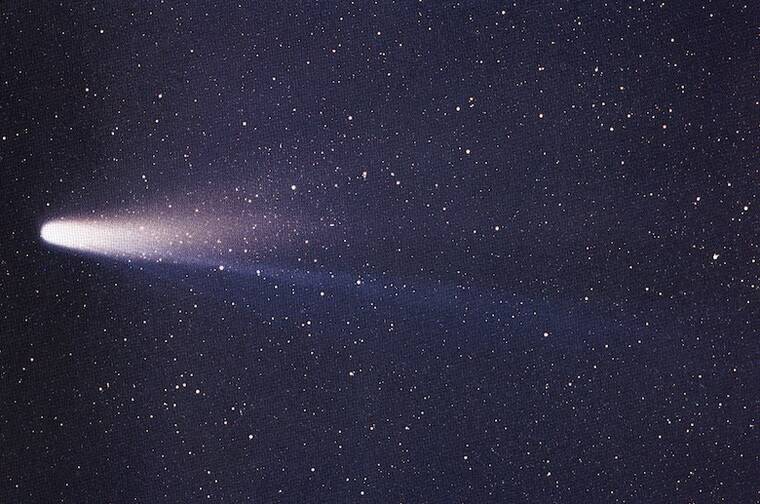1/1
Swipe or click to see more
W. LILLER/NASA VIA THE NEW YORK TIMES / 1986
In an image provided by W. Liller/NASA, Halley’s comet over Easter Island. The latest observable meteor shower will be the Eta Aquarids, known for its fast fireballs, which occur as Earth passes through the rubble left by Halley’s Comet.
Our universe might be chock-full of cosmic wonder, but you can observe only a fraction of astronomical phenomena with your naked eye. Meteor showers — natural fireworks that streak brightly across the night sky — are among them.
The latest observable meteor shower will be the Eta Aquarids, which have been active since April 19 and are forecast to continue until May 28. They reach their peak Saturday night into Sunday morning.
The Eta Aquarid is known for its fast fireballs, which occur as Earth passes through the rubble left by Halley’s comet.
Sometimes spelled Eta Aquariid, this shower is most easily seen from the southern tropics. But a lower rate of meteors will also be visible in the Northern Hemisphere close to sunrise. With the moon just a thin sliver in the sky, viewers could witness a strong show this year.
WHERE METEOR SHOWERS COME FROM
There is a chance you might see a meteor on any given night, but you are most likely to catch one during a shower. Meteor showers are caused by Earth passing through the rubble trailing a comet or asteroid as it swings around the sun. This debris, which can be as small as a grain of sand, leaves behind a glowing stream of light as it burns up in Earth’s atmosphere.
Meteor showers occur around the same time every year and can last for days or weeks. But there is only a small window when each shower is at its peak, which happens when Earth reaches the densest part of the cosmic debris. The peak is the best time to look for a shower. From our point of view on Earth, the meteors will appear to come from the same point in the sky.
The Perseid meteor shower, for example, peaks in mid-August from the constellation Perseus. The Geminids, which occur every December, radiate from the constellation Gemini.
HOW TO WATCH A METEOR SHOWER
Michelle Nichols, director of public observing at the Adler Planetarium in Chicago, recommends forgoing the use of telescopes or binoculars while watching a meteor shower. That’s because meteors can shoot across large swaths of the sky, so observing equipment can limit your field of view.
“You just need your eyes and, ideally, a dark sky,” she said.
Some showers are strong enough to produce up to 100 streaks an hour, according to the American Meteor Society, although you probably won’t see that many.
“Almost everybody is under a light polluted sky,” Nichols said. “You may think you’re under a dark sky, but in reality, even in a small town, you can have bright lights nearby.”
Planetariums, local astronomy clubs or even maps can help you figure out where to get away from excessive light. The best conditions for catching a meteor shower are a clear sky with no moon or cloud cover, at sometime between midnight and sunrise. (Moonlight affects visibility in the same way as light pollution, washing out fainter sources of light in the sky.) Make sure to give your eyes at least 30 minutes to adjust to seeing in the dark.
Nichols also recommends wearing layers, even during the summer. “You’re going to be sitting there for quite a while, watching,” she said. “It’s going to get chilly, even in August.”
Bring a cup of cocoa or tea for even more warmth. Then sit back, scan the sky and enjoy the show.
This article originally appeared in The New York Times.
Read More: World News | Entertainment News | Celeb News
Star Ads
